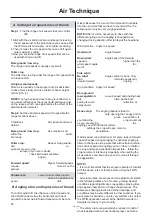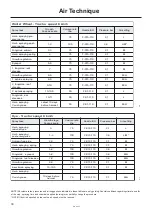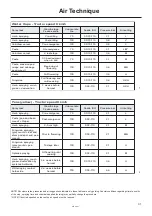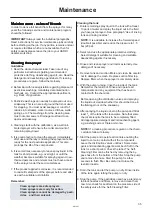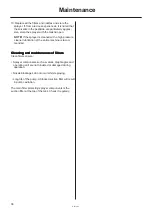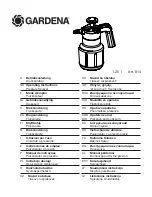
35
GB 12 01
Maintenance
Maintenance - r
Maintenance - r
Maintenance - r
Maintenance - r
Maintenance - rules of
ules of
ules of
ules of
ules of thumb
thumb
thumb
thumb
thumb
In order to derive full benefit from the sprayer for many
years the following service and maintenance program
should be followed.
IMPORTANT!
Always read the individual paragraphs.
Read instructions for service/maintenance jobs carefully
before starting on the job. If any portion remains unclear
or requires facilities which are not available, then for
safety reasons please leave the job to your HARDI
dealer’s workshop.
Cleaning the spr
Cleaning the spr
Cleaning the spr
Cleaning the spr
Cleaning the spra
aa
a
ayyyyyer
er
er
er
er
Guidelines
1. Read the whole chemical label. Take note of any
particular instructions regarding recommended
protective clothing, deactivating agents, etc. Read the
detergent and deactivating agent labels. If cleaning
procedures are given, follow them closely.
2. Be familiar with local legislation regarding disposal of
pesticides washings, mandatory decontamination
methods, etc. Contact the appropriate department,
e.g. Dept. of Agriculture.
3. Pesticide washings can usually be sprayed out on a
soakaway. This is an area of ground that is not used
for cropping. You must avoid seepage or runoff of
residue into streams, water courses, ditches, wells,
springs, etc. The washings from the cleaning area
must not enter sewers. Drainage must lead to an
approved soakaway.
4. Cleaning starts with the calibration, as a well cali-
brated sprayer will ensure the minimal amount of
remaining spray liquid.
5. It is good practice to clean the sprayer immediately
after use and thereby rendering the sprayer safe and
ready for the next pesticide application. This also
prolongs the life of the components.
6. It is sometimes necessary to leave spray liquid in the
tank for short periods, e.g. overnight, or until the
weather becomes suitable for spraying again. Unau-
thorised persons and animals must not have access
to the sprayer under these circumstances.
7. If the product applied is corrosive, it is recommended
to coat all metal parts of the sprayer before and after
use with a suitable rust inhibitor.
Remember:
Clean sprayers are safe sprayers.
Clean sprayers are ready for action.
Clean sprayers cannot be damaged by pesti-
cides and their solvents.
Cleaning the tank
1. Dilute remaining spray liquid in the tank with at least
10 parts of water and spray the liquid out in the field
you have just sprayed - See paragraph “Use of rinsing
tank and rinsing nozzles”.
NOTE:
It is advisable to increase the forward speed
(double if possible) and reduce the pressure to 1.5
bar (20 psi).
2. Select and use the appropriate protective clothing.
Select detergent suitable for cleaning and suitable
deactivating agents if necessary.
3. Rinse and clean sprayer and tractor externally. Use
detergent if necessary.
4. Remove tank and suction filters and clean. Be careful
not to damage the mesh. Replace suction filter top.
Replace filters when the sprayer is completely clean.
5. With the pump running, rinse the inside of the tank.
Remember the tank roof. Rinse and operate all
components and any equipment that has been in
contact with the chemical.
Before opening the distribution valves and spraying
the liquid out, decide whether this should be done in
the field again or on the soakaway.
6. After spraying the liquid out, stop the pump and fill at
least
1
/
5
of the tank with clean water. Note that some
chemicals require the tank to be completely filled.
Add appropriate detergent and/or deactivating agent,
e.g. washing soda or Triple ammonia.
NOTE!
If a cleaning procedure is given on the chemi-
cal label, follow it closely.
7. Start the pump and operate all controls enabling the
liquid to come in contact with all the components.
Leave the distribution valves until last. Some deter-
gents and deactivating agents work best if left in the
tank for a short period. Check the label. The Self-
Cleaning Filter can be flushed by removing the by-
pass hose from the bottom of the filter. Stop the pump
and remove the hose. Start the pump for a few
seconds to flush filter. Be careful not to lose the
restrictor nozzle.
8. Drain the tank and let the pump run dry. Rinse inside
of the tank, again letting the pump run dry.
9. Stop the pump. If the pesticides used have a tendency
to block nozzles and filters, remove and clean them
now. Also check for sediment on the pressure side of
the safety valve for the Self-Cleaning Filter.
Summary of Contents for MARRO TWIN FORCE 1000
Page 2: ...2 ...








